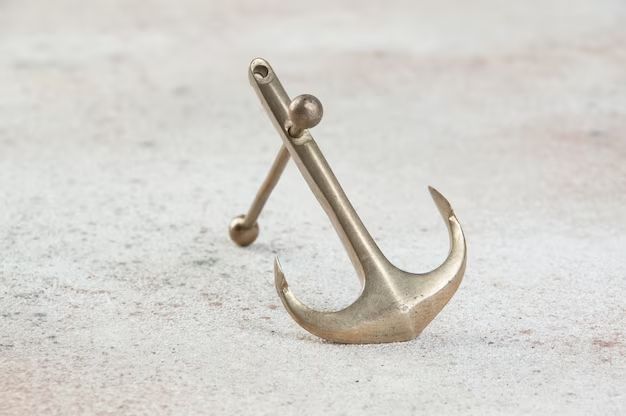Anchoring a wood stud to a concrete floor is a common task when building walls or framing structures on a concrete foundation. Properly anchoring the studs ensures the walls will be strong, secure, and long-lasting. There are several methods for anchoring studs, but the main steps are preparing the concrete, drilling anchor holes, securing metal or plastic anchors, and attaching the studs.
Page Contents
Things You’ll Need
| Safety glasses | Work gloves |
| Dust mask | Knee pads |
| Hammer drill | Masonry drill bit |
| Wrench | Measuring tape |
| Pencil | Metal or plastic concrete anchors |
| Wood studs | Screws |
Safety gear like glasses, gloves, knee pads and a dust mask are important when working with concrete and power tools. You’ll need a hammer drill and masonry drill bit to drill into the concrete. A measuring tape, pencil, anchors, studs, screws, and wrench to tighten the anchors are also required.
Preparing the Concrete
The first step is preparing the area on the concrete floor where you’ll be anchoring the stud. Remove any debris, dust or loose concrete so the studs can sit flush against the surface. Vacuum or sweep the concrete so it’s clean.
Identify the exact positions where you want to place the studs using a measuring tape and pencil. Mark the positions with an X. Make sure the stud locations align with your project plans and allow enough room for doorways or other openings.
Place the wood studs against the concrete floor aligned with the marks. Use a level to ensure the studs are perfectly vertical. Trace along the inside edges of the studs using a pencil to outline their positions on the concrete. Remove the studs after outlining.
Drilling Anchor Holes
With the stud positions marked, you’re ready to drill holes for the concrete anchors. Here are the steps:
1. Put on safety glasses, dust mask, and gloves to protect yourself while drilling. The hammer drill will produce concrete dust.
2. Load your hammer drill with the masonry drill bit. Carbide tipped drill bits work best for concrete drilling.
3. Position the drill bit on a mark inside the outline where you want the anchor hole located.
4. Set the drill to hammer mode and begin drilling straight down applying firm pressure. Let the drill do the work.
5. Drill down deep enough for the anchor size you’re using, usually 1.5″ to 2″ depth. Don’t drill completely through the slab.
6. Vacuum debris from the hole. Repeat drilling the required number and pattern of holes per stud. A minimum of two anchors per stud is recommended.
Installing Concrete Anchors
Once your anchor holes are drilled, install the anchors. Here’s how:
1. Insert a plastic or metal concrete anchor into each hole. Push it down flush with the surface.
2. Tighten the nut on top of each anchor using a wrench. This expands the anchor’s bottom edge and locks it in place. Don’t over tighten.
3. Give each anchor a slight tug to ensure it is firmly secured. If an anchor pulls out easily, drill the hole slightly deeper and reinstall it.
4. Make any final adjustments to the anchors so the studs will align properly when installed.
5. Double check your anchor pattern matches the expected stud spacing before proceeding.
Attaching the Studs
With the anchors fully installed, you can now attach the wood studs:
1. Position a stud over the anchors matching the expected hole spacing.
2. Pre-drill pilot holes if needed through the stud into the anchors.
3. Drive lag screws or other strong fasteners through the stud holes into the anchors.
4. Tighten down the fasteners using a wrench or drill, taking care not to split the wood.
5. Repeat steps to install and secure all remaining studs to the concrete with the anchors.
6. Check each stud with a level and make any adjustments needed until plumb.
The stud walls are now firmly anchored to the concrete floor! You can proceed with adding plywood or OSB sheathing to the studs.
Tips
Here are some useful tips to get the best results anchoring studs to concrete:
– Clean concrete thoroughly for maximum bonding strength.
– Wear eye and ear protection when drilling.
– Let the hammer drill do the hard work in hammer mode. Don’t force it.
– Vacuum dust between drilling holes.
– Stagger anchor hole locations between adjacent studs.
– Use sleeve anchors for extra strength if attaching wood to older concrete.
– Verify anchors are centered within the stud before tightening.
– Don’t overtighten lag screws into the anchors.
– Use adhesive or construction adhesive between stud and concrete.
Precautions
Take the following safety precautions when anchoring studs:
– Wear protective glasses, gloves, mask and knee pads.
– Use a GFCI protected outlet or extension cord.
– Keep drill steady and vertical when drilling.
– Avoid breathing concrete dust.
– Take care not to damage existing electrical or plumbing under the concrete.
– Follow all power tool safety practices.
– Get help lifting and positioning heavy studs.
– Double check for plumb, level and square.
Conclusion
Anchoring wood studs into concrete floors and foundations is made easy with hammer drills, concrete anchors, lag screws and safe installation practices. Be sure to prepare the area properly, drill straight anchor holes, secure the anchors tightly, and attach the studs with adequate fasteners. Following the steps outlined will result in stud walls that are extremely secure, plumb and resistant to vibration and movement. Although it requires drilling into solid concrete, the project can be completed fairly quickly. Just remember to take appropriate safety precautions throughout the process.
